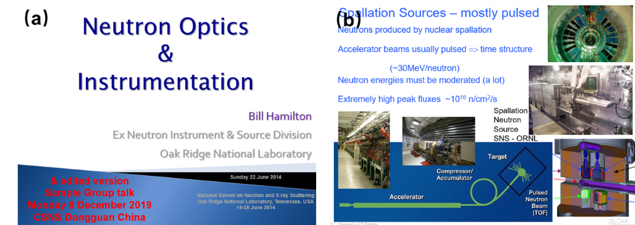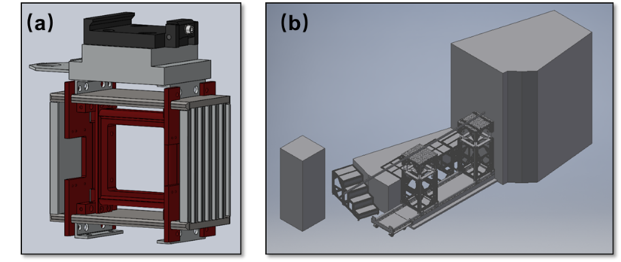

To the PIFI program committee,
It is my pleasure to receive the visiting scientist award of the Chinese Academy of Sciences PIFI program. I was invited to China by my former colleague who is now working at the China Spallation Neutron Source (CSNS), and wanted to hear my advice on their current development. As a neutron scientist who is always excited about new neutron facilities, I couldn’t be happier about this opportunity to see China’s efforts towards joining the neutron science society. With that in mind, I visited China in July 2019 to initiate the collaboration, and in November 2019 to participate in the CSNS polarized neutron workshop. Unfortunately, my next trip was throttled due to the pandemic and travel restrictions. Still, I continue to contribute to the research at the CSNS remotely and have discussions with the local development team.
Figure 1. Photo taken during a tour at the CSNS sand map in the office building
During my first trip to China, I took a tour (Figure 1) through the CSNS facility and saw its ongoing development plan. My colleague and I recognized that there is much I can contribute from my several decades of neutron beamline development experience. Several key projects were identified after the tour, specifically in the area of polarized neutron development as per the local researcher’s request. First, the development of polarized neutrons at the CSNS needs the establishment of infrastructure, including the neutron spin filter and neutron spin flipper. Second, it is equally important for the CSNS development team to also configure a proper control communication, so that each new piece of development hardware can be integrated into the existing data acquisition system.
Figure 2. Photo of me (left) and my wife (right) writing suggestions and advisory notes during discussion with the researchers at the CSNS
For the first project, it is crucial to develop a necessary platform for polarized neutron capability testing, which has been a key factor in other neutron sources that I have worked on. To support the local researchers working on such a development, I gave a few lectures in terms of general beamline development and neutron scattering concepts. A few of the slides are demonstrated in Figure 3. Beyond the slide, a few hardware developments were also initiated with my recommendation, which include a Mezei flipper and a concept design of the polarized neutron testing beamline. Both developments have been constructed and are under development, as shown in Figure 4.

Figure 3. Photo of the presentation given at the CSNS (a) Neutron Optics and Instrumentation (b) Demonstration of beamline at spallation neutron source

Figure 4. Schematics of developed instruments based on advisory (a) Mezei flipper for multiple wavelength neutron (b) Polarized neutron testing station
During my second trip in November, I attended the CSNS polarized neutron workshop along with other neutron scientists from around the world. The workshop discussed the current development progress at the CSNS and its vision for the future.
Figure 5. Photo of me (left) and my wife (right) during the workshop presentation
From an advice committee point of view, the workshop is a huge success in terms of connecting the newly-developed China Spallation Neutron Source with the international neutron science community, as well as setting the correct path for the facility to move forward.
Figure 6. Photo of all attendees at the CSNS polarized neutron workshop
During the workshop, we continued working on the previously identified project and pushed forward onto data analysis and communication. Currently, these projects are still in progress and the local developers at the CSNS are planning to test the newly-constructed Mezei flipper and construct the polarized neutron testing station. These bits of progress were made at the beginning of 2020, when the pandemic started to impact in-person travel around the world. Ever since then, I remain in contact with the researchers at the CSNS, and continue working on the instrument development through advising and lecturing.
With the current progress, the researchers at the CSNS and I are confident to complete the project, initiated in 2019, by the end of this year. The developed polarized neutron instrument and experiment method shall provide a long term benefit to future research at the CSNS, and hopefully the lectures I presented can help the people at the CSNS to join forces with the international neutron community. I look forward to continue participating in and assisting with neutron science development in China in the future.
William Anthony Hamilton,
Institute of High Energy Physics,
Chinese Academy of Sciences